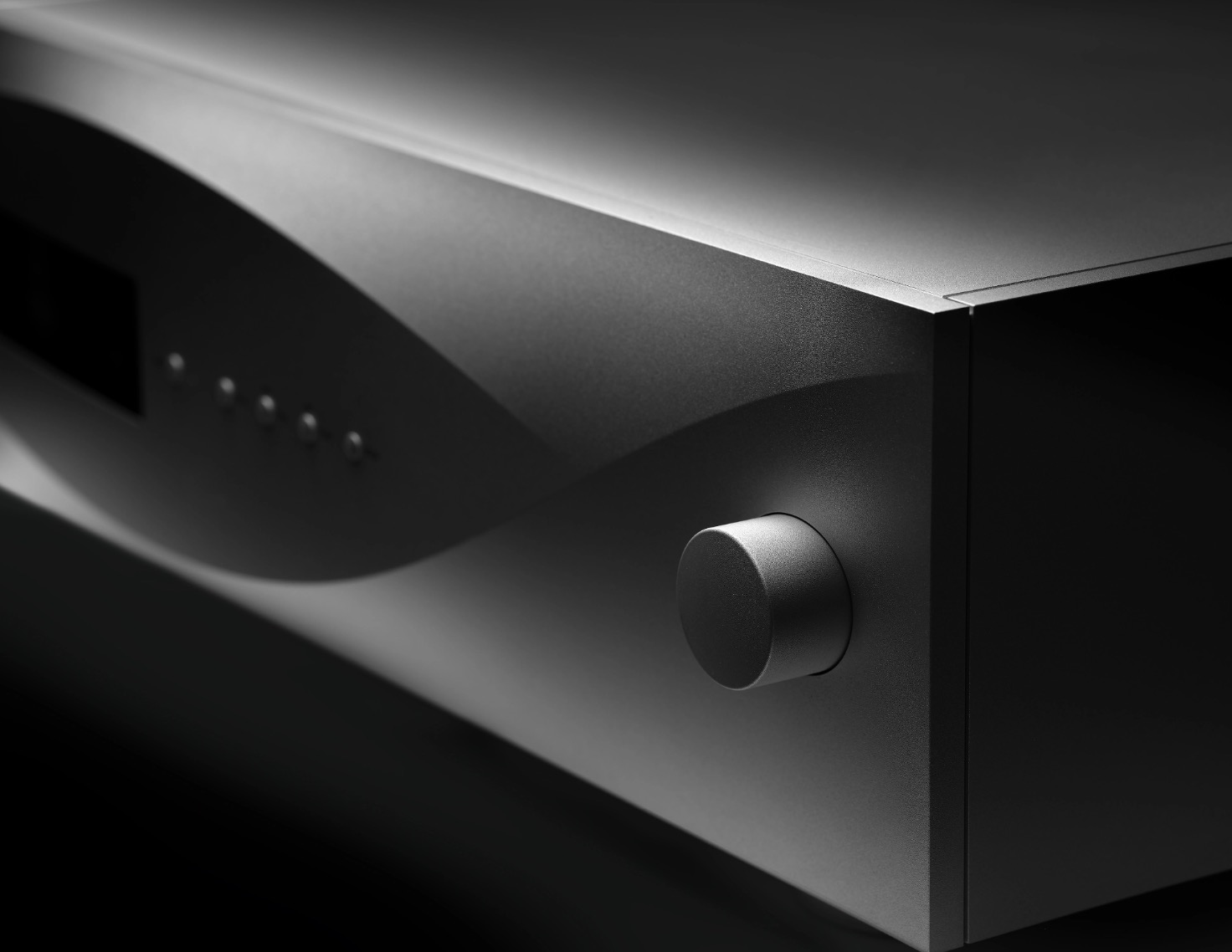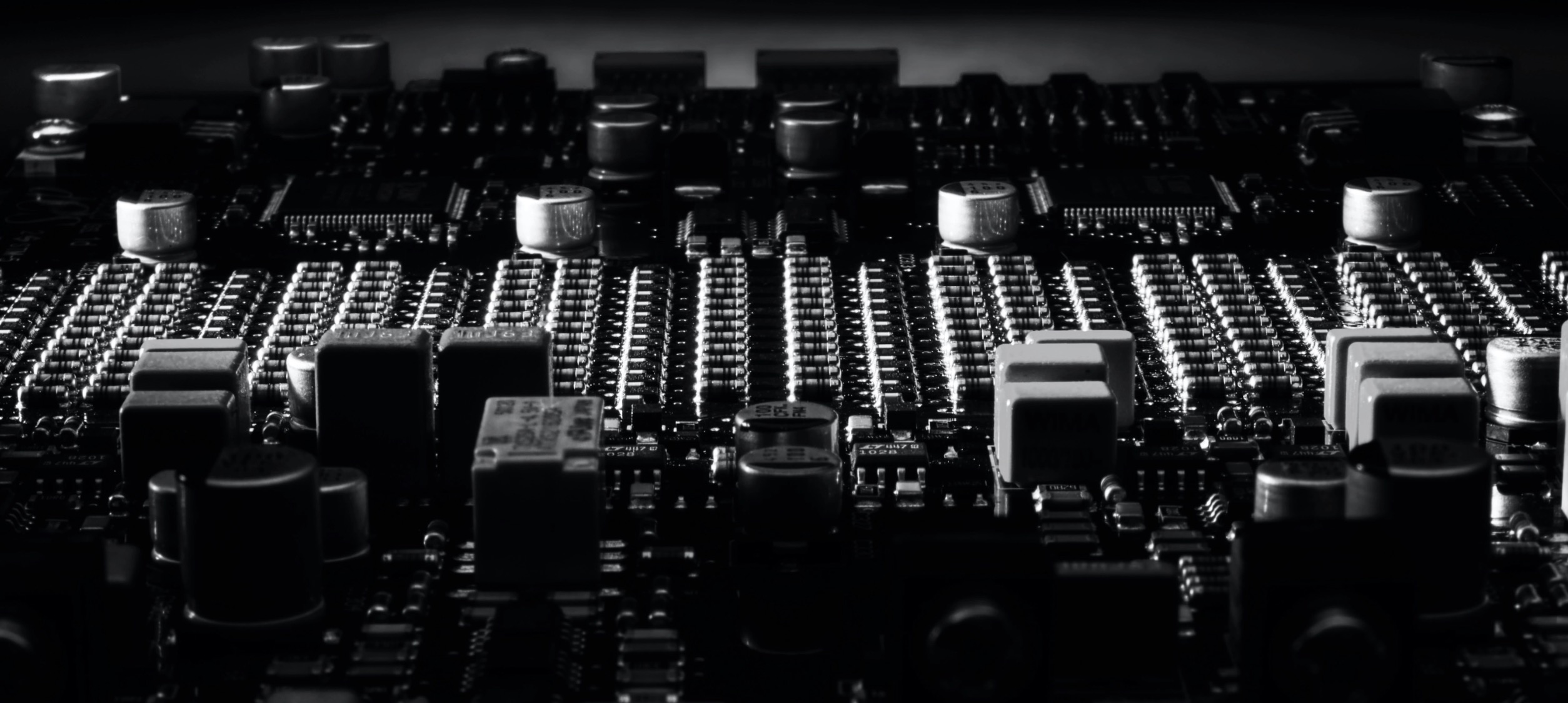Ring DAC
Peerless performance
The Ring DAC is a groundbreaking digital to analogue conversion system that lies at the heart of all dCS products. Designed like no other DAC, it uses a combination of powerful hardware and ingenious software to deliver a transcendent experience where all aspects of sound are resolved, from the finest of musical details, to the sense of time and harmonic movement. With its unique architecture and ultra-wide bandwidth, it is able to process even the most challenging recordings with ease, while minimising signal errors and variations that can lead to distortion. The result? A performance that is unrivalled in its precision, depth, range and faithfulness to the music.

Digital to Analogue Converters, or DACs, are a fundamental part of all digital audio systems. The purpose of a Digital to Analogue Converter in the context of a digital music playback system is to convert the digital audio data stream to an analogue signal. This analogue signal is then fed to transducers such as loudspeakers or headphones for listening. The DAC is an integral part of the playback chain, and has a profound impact on how we experience music.
The process of converting 1's and 0's into an analogue wave generates unwanted artefacts, or 'noise'. Common DAC topologies often correlate this 'noise' with the actual signal. This leads to distortion being created, which is then introduced into the music we hear. This distortion comes in the form of added harmonics, which the human ear finds difficult to ignore as harmonics are fundamental to how we hear and interpret music.
The dCS Ring DAC is a groundbreaking DAC that is unique in its design and peerless in its performance. Combining exceptional noise performance with vanishingly low distortion, ultra-wide bandwidth and very low jitter, the Ring DAC does not impose our view of the musical world on the 1s and Os it receives. Rather, it provides a virtually limitless performance envelope that provides a mirror to the recording, faithfully serving the musical message as the artist intended.
"When number-crunching mathematics and music collide so spectacularly as this, then special things happen."
Hi-Fi+ reviews the Vivaldi"There's just so much resolution here. We hear textures in instruments and dynamic nuances that most rivals simply don't notice."
What Hi-Fi? reviews the RossiniRevolutionary thinking
With the Ring DAC, we've engineered the most advanced and accurate digital-to-analogue conversion system available: a unique combination of hardware and software that resolves all aspects of a musical recording, from the finest of details, to the sense of time and harmonic movement.
On the surface, the Ring DAC may look like a Ladder DAC. There is a latch and a resistor for each current source, and these current sources are fed to a summing bus. The key difference between the Ring DAC and Ladder DACs, however, is that the Ring DAC uses current sources of equal value. This is what is known as a ‘unitary weighted’ or ‘thermometer coded’ DAC architecture. Additionally, the Ring DAC does not use the same current source(s) for the same bit every time.
The Ring DAC is based around a set of latches, all of which are turned on and off at high speeds to produce an equal amount of current. The FPGA on the Ring DAC employs a sophisticated mapping algorithm to turn sources on and off in such a way that any component value errors are averaged out over time.

Given that any combination of current sources can be fired for any bit in the Ring DAC, the error generated is completely unrelated to the audio signal; it is decorrelated. This decorrelation means that any errors are randomised and converted to white noise.
This approach reduces distortion to vanishingly low levels, avoiding the nonlinearities that can obscure low-level details that are so important in our understanding of a musical event.
Rewriting the rules
The nature of exactly how the Ring DAC decides which current sources need to be turned on or off at any given point to generate the correct signal is dictated by a highly sophisticated set of mathematical rules defined in the dCS Mapper. While it might appear to be random, this process is the culmination of three decades of continuous work, resulting in a carefully calculated set of patterns designed to minimise noise, distortion and crosstalk, while also keeping the highest degree of linearity by averaging out the contribution of noise-inducing components that fall out of specification over time.
Improvements to these proprietary mapping algorithms, as well as increases to the speed at which the Ring DAC operates (from 2.822 mHz to 6.14 mHz), have been provided to dCS owners through a series of software updates, ensuring it remains unrivalled in its performance and ability to take you to the heart of a recording. This software-based approach to DAC design means that our engineers - who are constantly exploring ways to improve the performance of both the ring and the output stage - can simply update the Ring DAC through software whenever new discoveries and advances are made.
Exhaustive development
Analogue design is as important to dCS as digital and is another factor that contributes to the Ring DAC's technical and musical superiority. A number of techniques are employed by our talented and experienced engineers to create state-of-the-art analogue performance. One example of this is the use of Compound Amplifier Topology in our hardware design, which involves cascading two op-amps to form a single amplification stage. This has a number of advantages: an op-amp can be chosen for the input stage with very good input characteristics, and an op-amp chosen for the output stage which has very good output characteristics. This is useful as it is quite unusual to find a single part that is equally effective in both input and output performance.
"As good as the Vivaldi DAC's measured performance is in the digital domain, it is equally good in the analog domain."
John Atkinson, former editor-in-chief, Stereophile

Additionally, this combination delivers more gain, so more feedback can be applied for improved linearity. The result is extremely low harmonic distortion, extremely low noise, and generally exceptional overall performance. Fundamentally, the D/A core of the Ring DAC is extremely linear, and it is important that the surrounding analogue design does not degrade that linearity.
PCB layout is also important, and a great deal of attention is paid to it at dCS. Quite often, there are unusual and unexpected interactions that occur between elements on a circuit board. This is where dCS's strict measurement regime, which includes bespoke test equipment developed in-house through our experience in radar and broadcast, is instrumental in identifying when something is occurring that should not be and tracking down the source.
From power supplies to signal routing, component placement and current steering, each aspect of the Ring DAC's design and layout is carefully considered and meticulously crafted to provide the finest possible performance, and a musical experience that feels both lifelike and beautifully complete.
Learn more: Understanding the dCS Ring DAC

Ring DAC
Peerless performance
The dCS Ring DAC™ is unique in its design and peerless in its performance. Combining vanishingly low distortion, ultra-wide bandwidth and very low jitter, it provides an unforgettable experience which uncovers the finest of musical details and presents sound with every nuance of emotion intact
LEARN MOREDigital Processing Platform
Limitless potential
Our powerful processing platform provides our systems with unrivalled intelligence, flexibility and infinite scope to evolve. With its state-of-the-art performance, flexible architecture and FPGA-based design, it provides us with complete control over audio processing, and the freedom to bring even the most ambitious product ideas to life
LEARN MOREClocking
Command and control
Our pioneering approach to clocking ensures all dCS systems are synced to a precise and stable reference source which sets world class standards for accuracy and jitter control. The absolute precision in a dCS system ensures that no subtle timing or spatial cues are lost during the conversion stage, providing a lifelike and three-dimensional sound
LEARN MORETesting & Measurement
Performance-led
Applying our decades of experience in pushing the boundaries of digital audio, we utilise a holistic approach to design and measurement, ensuring every dCS system delivers an unrivalled technical and sonic performance across all key technical dimensions
LEARN MOREExpanse
Enhanced headphone listening
Expanse is a patent pending innovation from dCS that brings the headphone experience closer to the studio listening experience. Its unique processing method replicates the effects of studio listening, where sound is projected into the space around us, rather than inside our heads, without altering the reverberation in a recording or affecting a system’s performance
LEARN MOREMosaic
Superior streaming
Mosaic provides a unified playback and control interface for all dCS owners, bringing together music from multiple platforms and sources in a single, intuitive interface, while providing complete control over your listening experience and system settings
LEARN MORE


